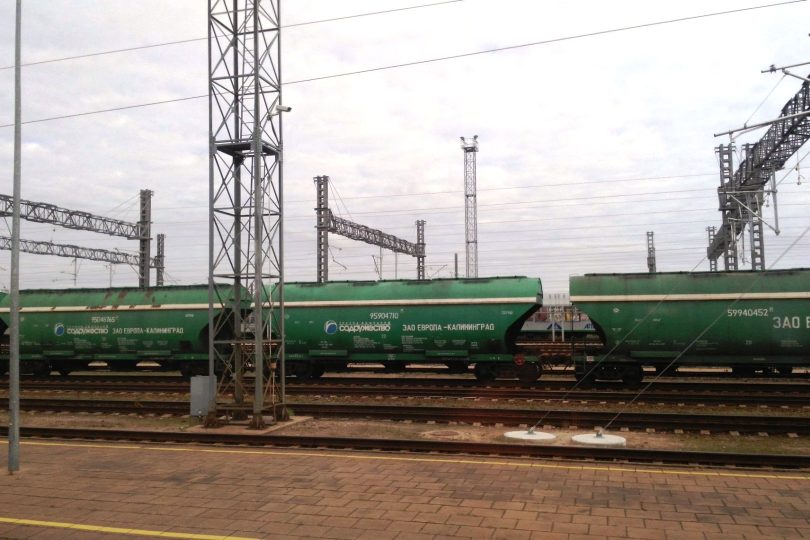Where does Kaliningrad traffic stand currently?

Developments regarding rail freight traffic to and from Kaliningrad via Lithuania peaked during the summer, but the situation has stabilised. In the sanctions’ aftermath, volumes have dropped, payments must be taken care of by customers only, while strict controls apply on the borders.
What started as a total ban on Russian and Belarusian trains transiting to Kaliningrad via Lithuania was then amended to limited traffic due to payment complications. In the end, trains can still run to and from Kaliningrad; however, the impact that this series of developments had on the Kaliningrad route cannot be overlooked.
Volumes down by half
As LTG Cargo mentioned to RailFreight.com, “the volumes of Kaliningrad transit, counting all freight transported to and from Kaliningrad through Lithuania by rail, regardless of the initial and final station, accounted for 500,000 tons during September. Comparatively, the route carried around one million tons of freight in the same period last year”. This means that volumes have dropped significantly, but the decrease does not affect only Russian trains.
In contrast, despite freight transported by Russian customers decreasing the most, cargo originating from other countries has also been impacted, even though there are no restrictions on processing payments, as in the case of Russia. It seems that shippers and freight forwarders prefer other gateways on the Baltic and North Seas at the moment.
Customers take full responsibility
As mentioned above, LTG Cargo’s customers that do not come from Russia and ship cargo from other countries follow the standard rules applied before the sanctions. For Russian and Belarusian customers, though, this is not the case. That is because, during the summer, Lithuanian banks stopped processing payments from Russia and Belarus, making rail transit a hot topic since, without payments, no trains could transit.
During early September, LTG Cargo kept carrying out services paid in advance by Russian and Belarusian customers. As reported previously by RailFreight.com, this arrangement would remain for the first three weeks of September. After this period, customers who wanted to transport their cargo through Lithuania were solely responsible for the service payments. “It is the customers’ responsibility to ensure that a suitable payment method for services is found. Transit will not be possible without these payments,” stressed LTG Cargo, adding that “a prerequisite for providing commercial cargo transportation services is the ability of customers to pay for them properly.”
Can all goods transit?
Since Kaliningrad belongs to Russia, “the transit of essential sanctioned goods through the territory of the EU is only possible using rail transport,” says LTG Cargo. This means that cargo which would be otherwise prohibited from being transported by trucks, for instance, can still be transported only by rail, practically circumventing the applied sanctions while abiding by international agreements.
Yet even in rail transport, there are some restrictions. Specifically, trains from Russia and Belarus cannot carry sanctioned military equipment or dual-use goods and technologies that can be used both by civilians and the military. These types of cargo cannot be transported “at any event” according to the EU Council’s regulations.

Moreover, “effective reinforced measures and controls are applied on the border to prevent any violation while rail transit is being carried out between mainland Russia and Kaliningrad.” Lithuanian customs have the leading role in ensuring that “sanctioned goods are not transported and that cargo is properly declared and taxed,” said a spokesperson. “Once potential risks have been identified, the wagons with the cargo are moved to a special hangar to proceed to a physical inspection of the cargo,” the spokesperson added.
For this purpose, in collaboration with LTG Infra, the Lithuanian Customs placed an X-ray control system at the Kena customs railway post on the border with Belarus. The Lithuanian institution mentioned that, on average, the station receives eight to nine daily cargo trains, which from now on will be inspected in real-time while moving. The X-ray scanner resulted from the region’s geopolitical shifts, underlined LTG Infa’s CEO Karolis Sankovski, who mentioned that soon two more such scanners will be deployed on the Stasylos station also on the border with Belarus and in Kybartai, bordering Kaliningrad.
Also read:
- Kaliningrad-bound trains back on track after sanction update
- EU could reverse Kaliningrad rail cut-off, fearing escalation with Russia
You just read one of our premium articles free of charge
Want full access? Take advantage of our exclusive offer





